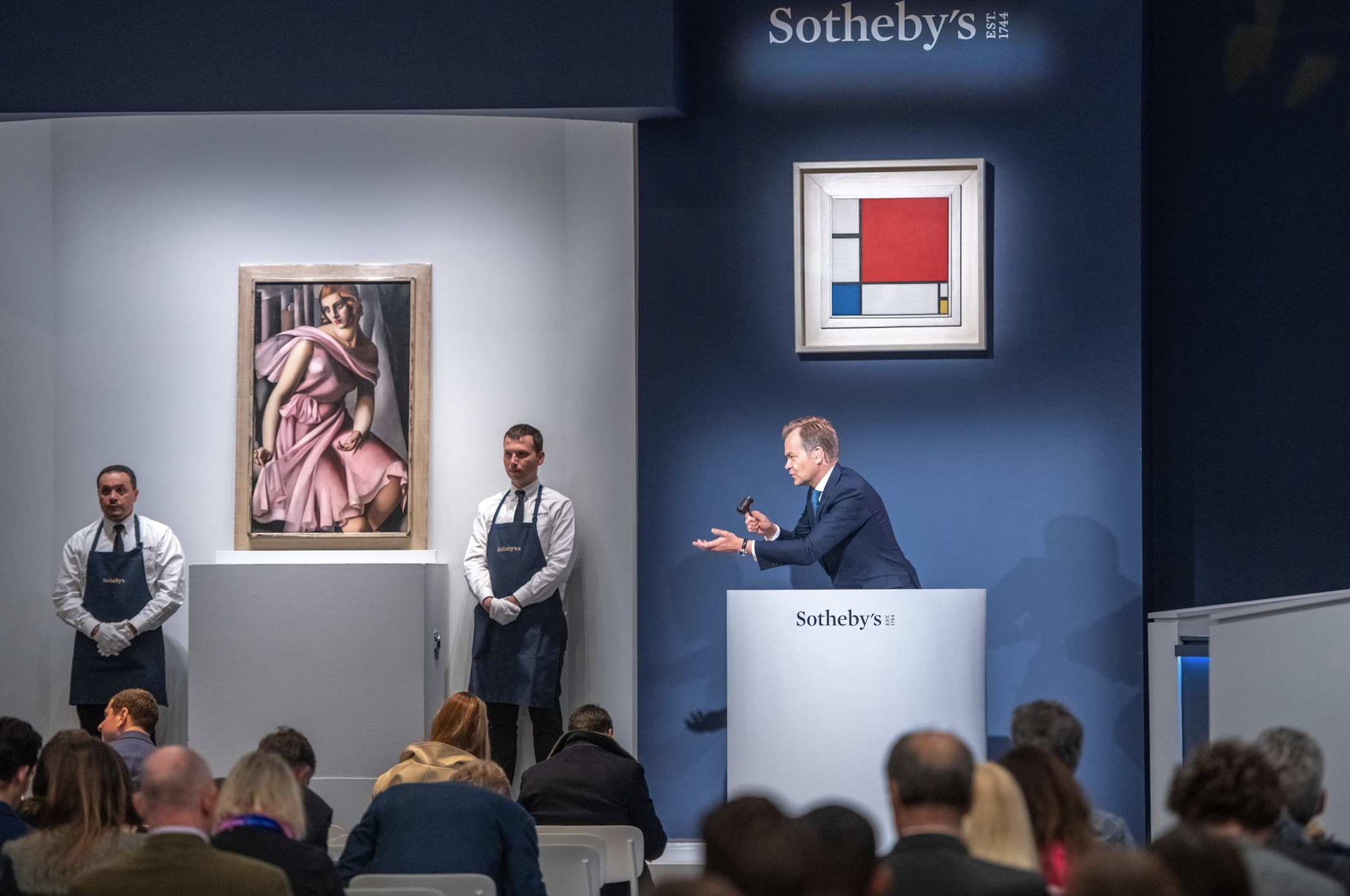
Following last week’s epic sale of Microsoft co-founder Paul Allen’s collection at Christie’s, many have been wondering whether the blistering success of that $1.5 billion sale—the largest net revenue in art auction history—would help or hurt the auctions that follow it. Was it a signal of a healthy buying market, despite concerns about a global recession? Or would it take a hefty chunk of change out of the market for other sales.
“You have to be prepared for either outcome,” said Brooke Lampley, Sotheby’s chairman and worldwide head of sales for global fine art ahead of tonight’s double-header sale of the collection of the late entertainment lawyer and Whitney Museum director David M. Solinger and its Modern art evening auction.
After the sale, it looked like the former theory held true, and that the art market is a singular force in the broader economy. The Solinger sale, which had a pre-sale estimate of $86.7 million to $117.9 million, netted $137.9 million, with 60 percent of the lots selling above their high estimate.
The modern art auction brought in $253.3 million on its $237.2 million to $295.3 million pre-sale estimate. This nets out to about 30 million less than the Modern sale brought in last year, which had a net revenue of $282.9 million.
Solinger served as the first president of the Whitney Museum that wasn’t a direct member of the Whitney family. His tenure there was marked by a sprawling expansion, as he both led the museum to its former building designed by Marcel Breuer, and opened its first branch in Lower Manhattan. Solinger died in 1996, leaving behind a prolific collection of Modern works, many of which he donated to museums, and 23 of which came to the auction block this evening.
Willem de Kooning, Collage, (1950). Courtesy of Sotheby’s.
The evening set off sailing, with an abstract Jean Arp sculpture made from pink limestone, Fruit Méchant (1936), selling for $2.5 million, five times its low estimate of $500,000. The priciest piece from Solinger’s collection was a frenetic, high-energy work on paper titled Collage by Willem de Kooning, which sold for $33.6 million over an $18 million to $25 million estimate, breaking de Kooning’s auction record for the medium. Solinger purchased the piece from Sidney Janis Gallery just two years after it was completed, and this is the first time it has been seen publicly since 1952.
Other star lots included Alberto Giacometti’s Trois hommes qui marchent (Grand plateau) (1952), which inspired a seven-minute bidding war. The piece is the artist’s only hand-painted sculpture of the famed cast. In the end, it brought in $30.2 million, which doubled its low estimate of $15 million. There were also three works by Jean Dubuffet up for auction, led by Épisode (1967), which sold for $5.1 million, and two Paul Klees, led by Landschaft mit dem Galgen (Landscape with Gallows) (1919), which sold for $2.3 million.
As the Solinger sale was wheeled away, the Modernist portion of the evening came on immediately. 21 of the lots had an irrevocable bid in place before the sale, and 25 had guarantees, so it was always going to be a lucrative evening.
Piet Mondrian, Composition No. II (1930), Courtesy of Sotheby’s.
Off the bat, Elaine de Kooning pummeled her previous auction record of $562,000 with Charge (1960), selling for $1.1 million (quite the evening for the late couple!). Quickly thereafter, Piet Mondrian set a new auction record with his Composition No.II (1930), a quintessential example of the artist’s gridded abstraction, which sold for a staggering $51 million to an Asian collector, coming in just a hair over Mondrian’s previous auction record of $50.5 million.
The piece outsold the ostensible headliner of the show, Guitare sur un table by Pablo Picasso, which had an unlisted estimate of $20 million to $30 million. The and was guaranteed to sell through an irrevocable bid set ahead of the auction, and sold for a healthy $37.1 million, after a lengthy bidding war. Reclining Figure: Festival (1951), a bronze sculpture by Henry Moore (which was actually his first life-size reclining figure) sold for $31 million with an irrevocable bid, over its unlisted estimate to exceed $30 million.
This year’s sale came with some scandal, as it was revealed last week that two pieces by Egon Schiele in the sale, Self Portrait (1910) and Standing Girl in White Petticoat (1911), are said to have been stolen from their Jewish owners during the Third Reich. The revelation was not mentioned, but it seemed understood by those bidding, as the self-portrait, which belonged to Nazi looter Galerie Wolfgang Gurlitt, passed without selling, and the other went for $1.6 million, beneath its $2 million to $3 million estimate. A statement from Sotheby’s regarding the provenance of these pieces denies that they were ever displaced during World War II, stating, ““Sotheby’s has a dedicated art specialist and restitution team that focuses on historic provenance research and assessing whether a work of art coming to auction could have been displaced as a result of persecution in WWII and never restituted…neither of the two works by Schiele is registered as having been lost, displaced, or looted in any of the available databases and resources tracking art losses during that period, and both have been cleared by the Art Loss Register.”
“We had to prepare for both fantastic record bidding, and the impact of the economic climate being not quite certain,” Lampley said after the sale. “My feeling is that [the Paul Allen sale] created momentum that we can only profit from, and validated the confidence of people to bid and buy in the current economic climate. That was made evident tonight.”